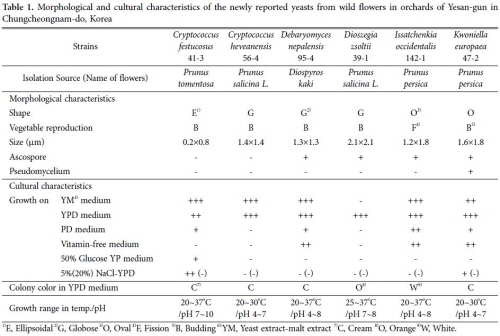Abstract
Six unrecorded yeasts,
Acknowledgements
This study was funded by the project on survey and excavation of Korean indigenous species of NIBR under the Ministry of Environment, Republic of Korea.
Figures & Tables

Sang-Min Han Se-Hee Hyun Ja-Won Shin Ha-Kun Kim Jong-Soo Lee
Six unrecorded yeasts,
This study was funded by the project on survey and excavation of Korean indigenous species of NIBR under the Ministry of Environment, Republic of Korea.
